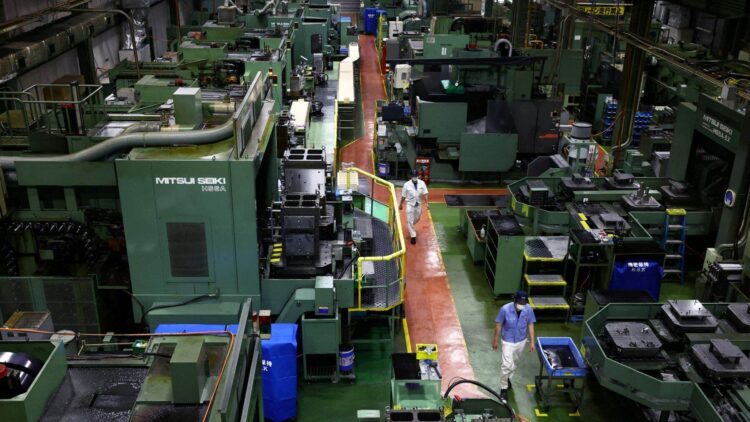Germany has recently seen a decline in industrial production, reaching levels similar to those during the COVID pandemic, resulting from structural, not just economic, problems. Increased competition, especially from China, combined with reduced international demand, has made it difficult to maintain satisfactory production levels in the country.
German industrial production sees significant drop in June
Germany’s industrial output fell in June to its lowest level since the pandemic in 2020, extending last year’s declines amid weakening foreign demand and increasing competition from China, while exports rose more than expected, data showed on Thursday. Industrial output dropped 1.9% month-on-month, the federal statistics office said, exceeding the 0.5% decline forecast in a Reuters poll of analysts.
Production reached its lowest point since May 2020, when the pandemic triggered a sharp contraction, the office added. It had previously seemed that German industrial production was rebounding this year after falling sharply in 2024, but the new data shows that the downward trend continued in 2025, Franziska Palmas, senior Europe economist at Capital Economics, said.
“The medium term outlook for German industry remains poor as weak growth in both Europe and China, and rising competition from Chinese producers is likely to weigh heavily on demand for German industrial goods,” Palmas added.
A review of the previous month’s data indicates that the most affected sectors, such as the automotive sector, are directly responsible for the industrial slowdown. This makes it even clearer that German industry is experiencing periods of decline, which are consequently generating immediate effects on GDP performance, which also suffered a significant reduction in the second quarter of the year.
Revision of May data accentuates slowdown in the automotive sector
The statistics office also revised the data for May to a 0.1% drop from the previous month, compared with a provisional figure of a 1.2% increase. The office attributed the revision to corrections from establishments in the automotive sector. Production was down 1% quarter-on-quarter in the second quarter, which means industry subtracted around 0.3% from GDP last quarter, Palmas said.
The likelihood of a downward adjustment to second-quarter growth forecasts highlights the persistent challenges facing the industry. The sector’s sluggish performance indicates that the anticipated “cyclical rebound” could be at risk, extending the stagnation period and necessitating policy measures to prevent a prolonged recession.
Revision of GDP growth reinforces pressures on German Industry
An unwelcome side effect of Thursday’s figures could be a downward revision of the first GDP growth estimate for the second quarter, Carsten Brzeski, global head of macro at ING, said. Germany’s economy contracted by 0.1% in the second quarter, the first estimate showed, as demand from the U.S. slowed following months of strong purchases in anticipation of tariffs.
“Our previous view that the German economy would at least experience a cyclical rebound has come under enormous pressure,” Brzeski said. “At face value, industry remains stuck in a very long bottoming out.”
German exports grow, but external pressures persist
German exports rose 0.8% month-on-month in June, surpassing the 0.5% increase predicted by analysts. Exports to European Union countries increased by 2.4%, while shipments to non-EU nations fell 1.2%, the statistics office said. Exports to the United States dropped 2.1% compared with May, marking a third consecutive monthly decline and reaching their lowest value since February 2022.
Overall, it’s safe to say that Germany is currently facing complex and multifaceted domestic and foreign industrial challenges that have been further severely hampered by the ongoing US tariff policy. All of this clearly indicates the country’s urgent need to comprehensively review its industrial strategies in order to ensure significantly improved global competitiveness and long-term economic resilience.
GCN.com/Reuters


